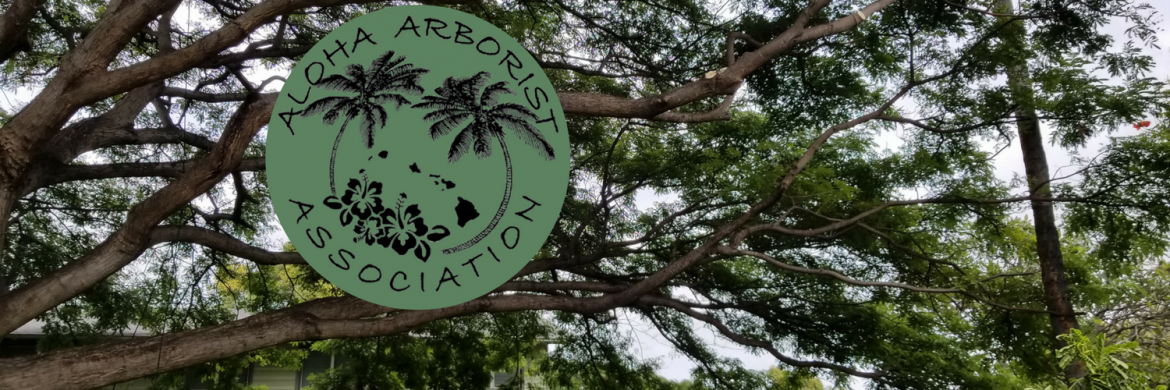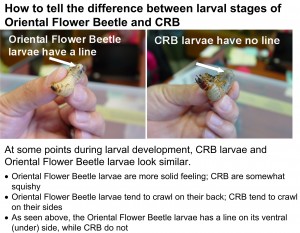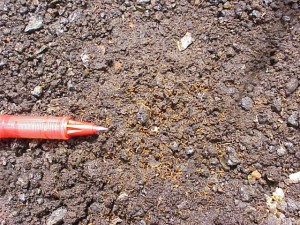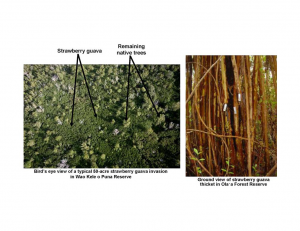Author's posts
Feb 25
Coconut Rhinoceros Beetle Best Management Practices
Coconut Rhinoceros Beetle (CRB) BMPs or Recommendations for Landscapers and Arborists By Rob Hauff Remove standing dead coconut palms to prevent infestation. Decaying coconut wood is the preferred breeding habitat for CRB. Wood should be chipped and composted away from infested areas, preferably in few centralized piles, rather than multiple widely dispersed piles. Palms should …
Feb 18
February 2014 Pest of the Month
Hawaii Early Detection Network Priority Pest for Kauai, Oahu, Molokai, Lanai, and Big Island. Have you seen Hala Scale (Thysanococcus pandani)? Identification: Presently only on the island of Maui. The hala scale insect (Thysanococcus pandani) causes yellowing of and serious damage to the leaves of Hala (Pandanus tectorius). Adult and immature scale insects are seen on …
Jan 13
January 2014 Pest of the Month
Pest of the Month Update – Little Fire Ant (LFA), Wasmannia auropunctata. The Hawaii Department of Agriculture has confirmed that the LFA has spread from Big Island to Maui and Oahu. http://www.kitv.com/news/hawaii/agriculture-officials-confirm-spread-of-fire-ant-to-oahu-maui/-/8905354/23720066/-/15huymlz/-/index.html http://hdoa.hawaii.gov/blog/main/lfaonhapuu/ Hosts: LFA are found both on the ground and in vegetation. They climb onto plants of all sizes, including trees, but they …
Oct 24
November 2013 Pest of the Month
Biological Control Release of Tectococcus ovatus, a Gall-forming Scale Insect to Aid in the Control of Strawberry Guava (Psidium cattleianum) in Hawaii. Strawberry guava was introduced to yards and gardens of Hawai‘i in 1825. Since then, it has spread into moist and wet forests statewide. Strawberry guava is killing and replacing native forests by forming dense, …
Oct 07
October 2013 Pest of the Month
Melaleuca Psyllid – Boreioglycaspis melaleucae Moore An introduced psyllid for biological control of Paperbark trees in Florida. Hosts: Melaleuca quinquenervia (Paperbark Tree), Melaleuca leucadendra, Melaleuca nervosa, Melaleuca argentea, Melaleuca viridiflora, Melaleuca nodosa, and Callistemon citrinus (Bottlebrush). Distribution: B. melaleucae has been collected from all states in its native Australia except South Australia. Specimens released in …
Sep 10
September 2013 Pest of the Month
Citrus Mealybug (Planococcus citri) Hosts: Annona, Arabica, and Robusta coffee, cotton, banana, carambola, cacao, flowering ginger, macadamia, mango and plants belonging to Citrus genus. Distribution: This pest has a pan tropical distribution that extends into subtropical regions. It is present in nearly all coffee growing countries. Damage: Leaves of plants attacked by the root form …
Sep 10
August 2013 Pest of the Month
Host: Coconut and Oil palms mainly – but also may attack other palm species Distribution: South Pacific (American Samoa, others) and Guam. Damage: V-shaped cuts in the fronds or holes through the midrib Control: Eliminating the places where they breed and manually destroying adults and all stages of life cycle – eggs, larvae, and pupae. …
Sep 08
July 2013 Pest of the Month
Graphiola leaf spot – Graphiola phoenicis Hosts: The primary hosts in Floridaare Phoenix species, especially Phoenix canariensis (Canary Island date palm) and Phoenix dactylifera (date palm). Distribution: Widely distributed throughout the date-palm growing world. Damage: Very small black, cup-shaped fungal bodies (sori) are present on leaf blade of the oldest leaves. This disease is primarily …
Sep 08
June 2013 Pest of the Month
Acacia Psyllid – Psylla uncatoides Hosts: Acacia koa, Acacia koaia Distribution: Originates in southeast Australia. Also found in New Zealand, California, and Hawaii. Damage: Feeds primarily on the young terminal growth. Heavy infestations can severely defoliate and kill twigs and branches. Control: A biological control, Harmonia conformis, was successfully established in Hawaii in the 1970s. …









